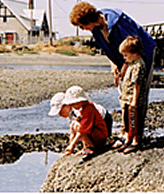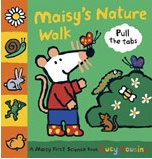Some educators believe that today’s children spend so much time in front of screens that they lack experiences connecting to nature. Encouraging children to be “green kids” begins with providing them with large amounts of time in natural outdoor settings where they can play, explore and experience natural systems.
Exploring the natural environment promotes curiosity, self-confidence, and creative thinking. Children today often need help to feel connected with nature.
Unstructured time to play outdoors, games, bird watching, nature hikes, and park programs all make it easier for children begin a life long appreciation of the outdoors. Joseph Cornell’s, Sharing Nature with Children, is the classic how to guide for these types of activities.
Green Kids Celebrate Earth Day
- Introduce Earth Day with a globe.
- Let the children know that Earth Day was started about 30 years ago to make people aware of the importance of keeping our planet healthy and clean.
- Place a sticker on the globe to mark where the children live.
- Talk about the term “green kids” and keeping the Earth “green” and what that means. Kids learn the meaning of this by participating in eco-friendly experiences.
- Read simple Earth Day books and talk about the content. Suggestions – It’s Earth Day! (Little Critter) by Mercer Mayer, Biscuit’s Earth Day Celebration by Alyssa Satin Capucilli and David T. Wenzel and Let’s Celebrate Earth Day by Peter Roop
Make a class book or poster
Challenge children to think of things they can do in their homes or classrooms to care for the Earth and record
- Have each student draw a picture of something they can do to help keep the Earth healthy and clean (suggestions below).
- Label each picture.
- Attach each picture to one or two chart paper posters or staple them into a class book.
- When children complete one of the classroom Earth Day activities they place an Earth Day sticker next to the picture in the book or on the chart poster.
Need help coming up with ideas? Try these 8 suggestions…
1. Save water in the painting center
- Children can swish the brushes around in a container of water instead of running the water to clean them.
- Ask the office staff to save the large poster and advertisement junk mail for kindergarten easel painting.
- Children explore how differently the paint handles on the backs of the shiny poster paper.
2. Build recycling responsibility
- Children take turns being recycle monitors.
- They keep an eye on the trash and recycling buckets each day to make sure that items are placed in the correct places.
3. Help kids become comfortable with nature
- Nature is so foreign to some kids that they are afraid of going for hikes or to the forest.
- Before going on field trips, help the kids become familiar with nature by introducing the topic with friendly books like Maisy’s Nature Walk by Lucy Cousins.
- Make the dramatic play center a nature play environment to get children excited about being naturalists.
- Put up posters of the forest, of animals and plants.
- Add naturalist toy belts with binoculars, clipboards, and magnifying glasses attached.
- Add toy telescopes, recording clipboards, measuring equipment, a couple of pairs of gumboots, fisherman type vests with lots of pockets, toy stuffed animals, etc.
4. Review the 4Ls of living things on nature walks
Before actually going on a nature walk, review the 4 Ls of living things.
- Look at them,
- Learn about them,
- Let them go (after an hour or two),
- Leave them alone.
Role play carefully lifting a rock to see what is underneath and then gently returning it to the same spot. Model observing and recording observations on a clipboard.
When you do take the kids outside give each one a clipboard to carry. Encourage them to record some of their observations. To make simple to carry clipboards:
- Place two thick elastic bands around a piece of card.
- Tuck a piece of paper inside on the front and back of the card and tape a string with a pencil to each one (a parent made me a classroom set).
- Take a few clear plastic bags to bring some items back to the classroom to study, then emphasize returning the items to the same places you found them.
5. Use reusable products rather than disposable.
- Reduce the amount of items that go into the trash by teaching lessons on packaging.
- Choose products with less packaging when you shop for classroom supplies and show the children.
- Make the kids aware of how they are helping the earth by bringing yogurt in a reusable containers rather than a prepackaged ones.
- Supply real cups (labeled) rather than throw away plastic or foam ones and use real cloth rags rather than paper towels to clean up paint on tables.
- When kids make green choices bring it to the attention of the other children.
6. Pick up trash
- If your school is in a safe environment, provide gloves and garbage bags and have children help pick up trash from around the playground.
7. Save electricity
- It makes a nice change to turn the lights out during snack, lunch times and even center times if your room has enough natural lighting.
- It alters the mood and saves power too. The special helper of the day can be responsible for this job.
8. Teach children to respect nature
- Your enthusiasm concerning interesting bits of moss, leaves or shells that the children bring into the room is contagious.
- Have a special place in the room to show off these items.
Help students see themselves as “green”
Help kids notice when they reuse items and encourage them that they are becoming “green kids”. Comment on the children’s efforts each time they complete a green activity. If they draw on both sides of their paper, use egg cartons for plant seeds or milk jugs as bird feeders, if they reuse old office envelopes and papers or cut and glue pictures from outdated teacher resource catalogues, talk about what they did and how each little bit helps. Avoid reusing items to make the type of crafts that will just be thrown into the garbage the week after they are made.
Help children to feel empowered, that they can make a difference to the world. Too much information without a balance of “how to solve the problem” can make children feel overwhelmed and discouraged. “Ten Things I Can Do to Help My World”, by Melanie Walsh is a great book to introduce kindergarten students to environmental education activities.

Build a Green Library
Gather books to create a library for green kids and read the stories throughout the year.
Empower Green Kids
Help children to feel empowered, that they can make a difference to the world. Too much information without a balance of “how to solve the problem” teaching can make children feel overwhelmed and discouraged.
10 Things I Can Do to Help My World by Melanie Walsh is a great book to introduce kindergarten students to environmental education activities. This book is written in a way that young children will understand.


